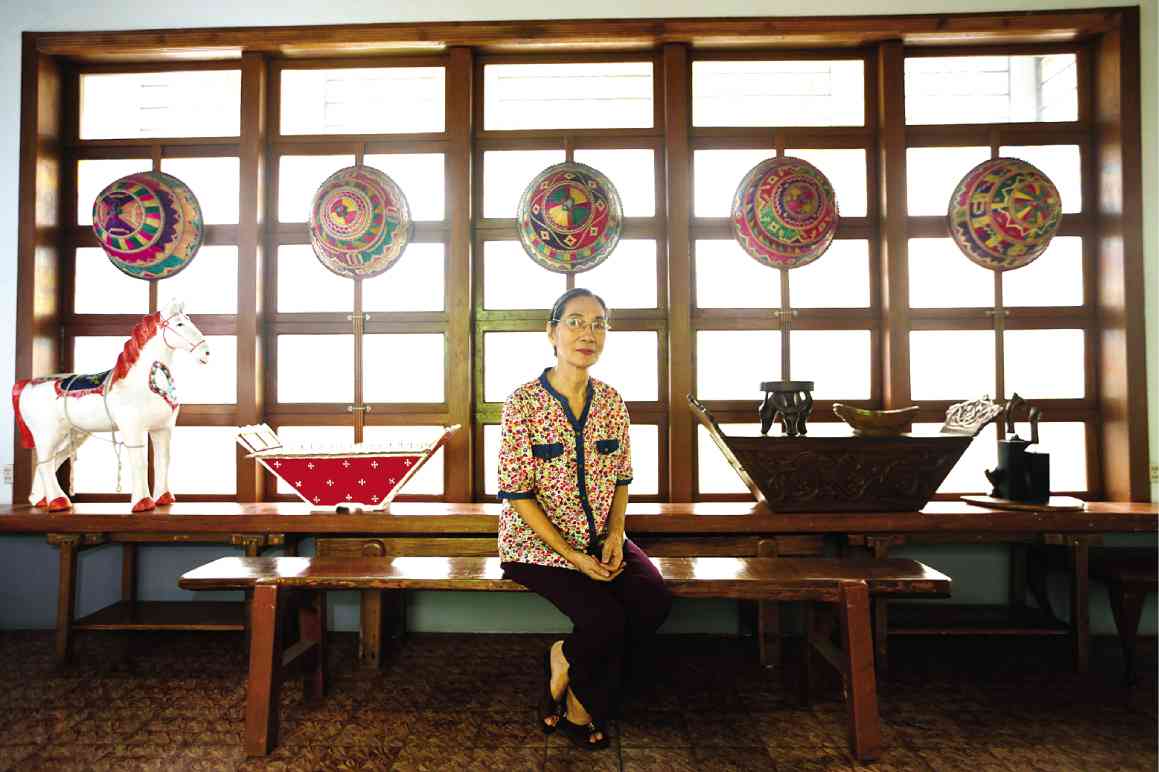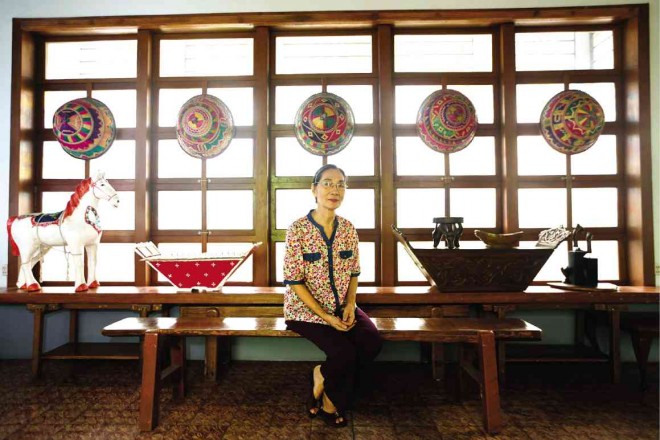
A dance must be repeated, or else it vanishes,” says Ligaya Fernando Amilbangsa. “When the one performing the dance dies, the dance dies with her.”
For more than 50 years, Amilbangsa has been tirelessly keeping the dance which she has named pangalay alive.
From the Filipino root word alay, which means “offering,” pangalay stems from ancient dance traditions of the Sulu archipelago that predate both Islam and Christianity, and beyond, to the ancient civilizations of Java, Cambodia and other Southeast Asian countries.
But the way Amilbangsa describes it, pangalay sounds more like a spiritual practice rather than a mere folk dance.
“Pangalay is basically pure dancing,” she wrote in a paper. “Motion in stillness, stillness in motion. This is the pangalay.”
If that sounds a little like Bruce Lee quoting the “Tao Te Ching,” maybe it’s because pangalay draws from the same eternal wellspring, the mystic Source.
Indeed, time seems to stop when the dance begins. The slow, hypnotic movements place both dancer and audience into a kind of collective trance, a meditative state that seems to linger even after the dance itself ends.
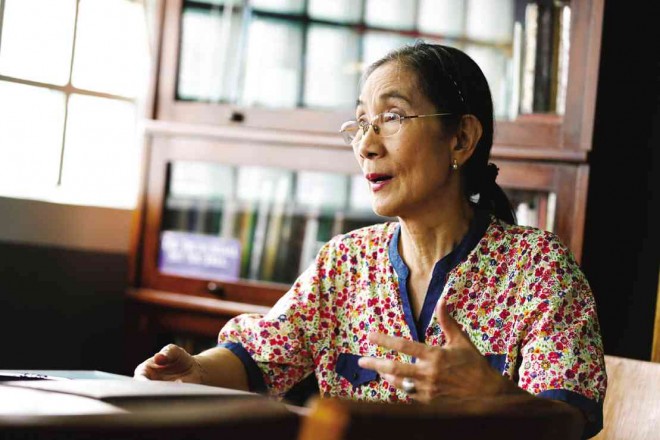
“It’s difficult to learn at the outset,” she says. “You have to internalize the rhythm, which follows the internal music. The rhythm is within the dancer. Breathing. The same principle as in yoga, tai chi, chi kung—you follow the music within your body, and what is that? Breathing. That is a universal music. For every living thing, the breath is their music.”
Amilbangsa is now 72, but the years seem to fall away whenever the subject of pangalay comes up. Clearly, her passion for the dance has remained undimmed all these years. If anything, she is even more enthusiastic about it now, especially since receiving the 2015 Ramon Magsaysay Award that recognized her tireless efforts to preserve and propagate this living tradition.
From a stack of yellowing photographs she takes a sepia-toned snapshot of a little girl in a ballerina’s tutu. “This was me in 1954,” she recalls. “I was 11 years old.”
In those days, public school students from all over Rizal would converge at the Rizal High School in Pasig for a mass demonstration—not a protest, but a dance exhibition.
The tall man
That year, she recalls, the pupils milled around a tall man in a white amerikana. Amilbangsa recalls she didn’t know what the fuss was about, until after the tall man shook her hand. Later, she was told that the tall man was none other than President Ramon Magsaysay.
That distant memory of Magsaysay, following on the heels of receiving the award named after him, creates a sense of having come full circle.
We are at the Handog Center, a 1950s Art Deco house that Amilbangsa bought, restored, and transformed into a community cultural center in Calumpang, Marikina, right next door to the house where she grew up.
There is a certain ironic resonance in the fact that this stretch of J.P. Rizal Street, on the outskirts of Marikina, used to be the main drag of the once-notorious Calumpang red-light district up until the 1970s. Across the street from the Handog Center, a different kind of bailarinas once plied their trade in seedy cabarets and nightclubs.
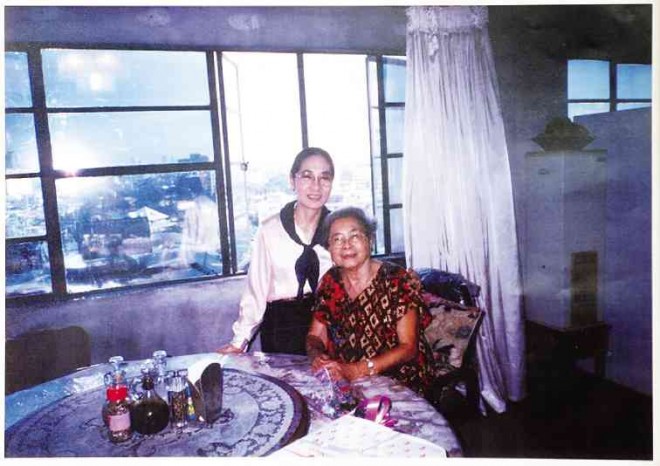
Today, pangalay classes are held every Saturday at the Handog Center. The dance studio is decorated with musical instruments and other artifacts from the Sulu archipelago. The neighborhood youth can also avail themselves of the center’s reading room, which is well-stocked with books on art and culture from Amilbangsa’s personal library.
It is her way of giving back to her hometown, as well as an alternative to Internet gaming centers and Zumba classes that have come to dominate the cultural life of the neighborhood.
Amilbangsa was born in 1943, right in the middle of the Japanese occupation. Her father was Gil Estanislao Fernando Sr., long-serving mayor of Marikina. (Former Metropolitan Manila Development Authority chair and Marikina Mayor Bayani Fernando is her younger brother.)
Her first encounter with dance came about not because of any interest on her part, but because of poor health.
“I was a very sickly child,” she recalls. “My father enrolled me in ballet classes not so I could dance, but just to make me stronger. I was 8 or 9 years old.”
Amilbangsa recalls walking to elementary school from her house. By the time she reached high school, her father had founded the Marikina High School (now the Marikina Polytechnic College).
Her mother was an accomplished pianist, so music was part of everyday life in the Fernando household. Every Christmas, her father would also take the family to Luneta, where the Mabini painters used to hold an open-air exhibit of their works. This might have been the beginning of Amilbangsa’s interest in the visual arts. She still paints, although these days she works mainly in pastel on canvas or paper, mostly portraits.
But Amilbangsa credits her real cultural awakening to her college years at the Far Eastern University, where she enrolled as an English major in 1959.
“FEU was at the forefront of cultural activity in Manila, and many of the students who passed through its portals were awakened to the importance of culture in our lives,” recalls Amilbangsa. “Our dean of arts and sciences at the time was Alejandro Roces, and we had a beautiful auditorium. I saw many concerts, ballet recitals and operas, and listened to many guest lecturers there. FEU had a huge influence on the cultural life of Manila and environs at the time.”
It was also in FEU where she would meet a Political Science major named Datu Punjungan Amilbangsa, scion of a prominent Jolo political clan, who would marry her in 1964 and introduce her to the rich cultural heritage of his homeland, leading to her discovery of the pangalay.
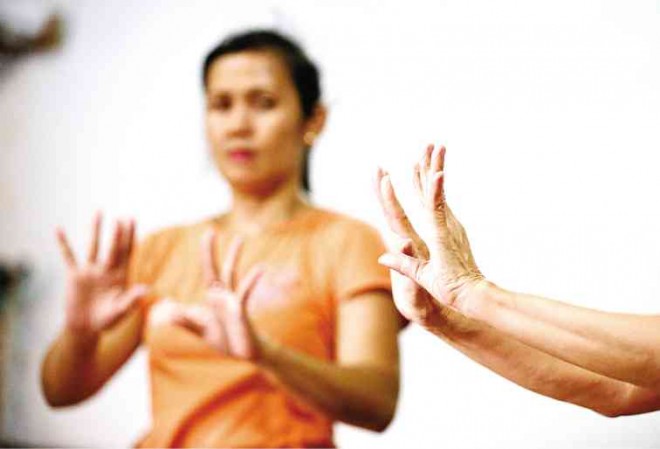
Sharp distinction
To this day, Amilbangsa insists on drawing a sharp distinction between the Sulu archipelago, which encompasses Jolo, Tawi-Tawi and the surrounding islands, and mainland Mindanao.
“We are part of the southern Philippines, but we are not a part of Mindanao,” she says. “Even before the Philippines became a republic, Sulu was already an organized state.”
Even in 1969, when Amilbangsa began her research on the culture and traditions of Sulu in earnest, traditional lifeways were fast disappearing. The MNLF rebellion of the early 1970s and the ensuing armed conflict didn’t make things any easier.
Nevertheless, Amilbangsa managed to learn the intricate dance movements from various traditional dancers, practicing by candlelight and watching the movements of her shadow on the wall. Eventually, she amassed a vocabulary of postures and movements that she codified into pangalay as we know it today. Along the way, she devised a teaching method for the dance, and explored its similarities to traditional dances from Indonesia, Cambodia, Thailand and other Southeast Asian countries.
After four years in Jolo, Amilbangsa moved to Bongao, Tawi-Tawi, to take up a teaching post at the Mindanao State University unit there.
“I saw an opportunity to find out if I could teach what I had been researching, to natives.”
Although the locals were familiar with traditional dance and other folk arts of the region, there had been no systematic effort to codify them so they could be taught formally.
“Until now, it’s still a very extemporaneous thing—if there’s a celebration, they dance,” says Amilbangsa.
But her background in theater and her training, as well as the strong influence of National Artist for Dance Leonor Orosa-Goquingco, allowed Amilbangsa to choreograph and present pangalay in a way that preserved its authenticity and allowed audiences to appreciate its essence, not as a relic of some bygone era, but as part of a living tradition that was still vital and growing.
Most of all, Amilbangsa was careful to distinguish authentic pangalay from the glitzy folk dance productions put on by dance troupes for tourists.
This marked her transformation into a “cultural warrior,” spreading pangalay with a missionary fervor.
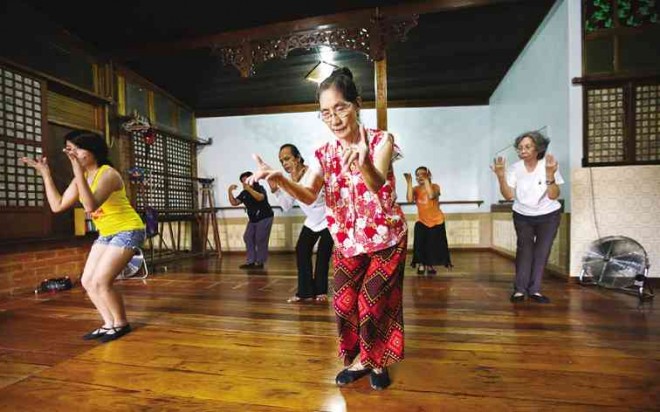
In 1974, she established the Tambuli Cultural Troupe in Bongao. Four years later, she set up the Integrated Performing Arts Guild in Iligan City. Following the death of her husband in 1987, she moved back to Marikina, where she established the Alun-Alun Dance Circle in 1999, now the main headquarters for teaching pangalay.
She also published her book “Pangalay” in 1983, which remains the standard reference for the art form. In 2006, she published “Ukkil: Visual Arts of the Sulu Archipelago,” which drew on her own extensive collection of artifacts to present a comprehensive picture of the traditional arts and crafts of the region, which are also fast disappearing.
In 2011, Amilbangsa was proclaimed “the most outstanding artist of Tawi-Tawi,” a singular honor for a Christian from Marikina.
“I’m so touched by that recognition from a majority Muslim community,” she says. “It speaks a lot about how much they value my work. When my book was first published, it moved them to tears when they first saw it, and it dawned upon them that we should handle with loving care whatever traditions are still there, whether in the performing arts or the visual arts.”
“I hope pangalay can become a national tradition, because it is something that connects us to the antiquity of Filipino culture, and it is a living tradition, so there is continuity. It is also something that predates Islam and Christianity, so we can unite Christians, Muslims and the lumad.
“We always have to remember tradition, because without tradition, who are we?” she says. “Every cultural worker should be imbued with that crusading spirit. We should look back at our traditions and use that to create something new.”

